Affiliate Marketing for Beginners: The Complete Guide
For beginners looking to earn online, affiliate marketing offers a compelling path to generate income by promoting products and services. This guide will demystify the core concepts of this marketing modality, outlining the roles of key participants like the affiliate publisher, merchant, and network, and demonstrating how you can start your journey with minimal initial requirements. Discover essential strategies for choosing the right affiliate programs, navigating compliance rules, and leveraging effective tools to build a successful online business.
- Question 1: Traffic Volume Assessment
Question 2: Niche Market Analysis
Question 3: Content Volume Evaluation
Strategic Recommendations Based on Your Answers
Why Beginners Should Avoid Amazon Associates
- Autoresponder Services
Market Research Tools
Traffic Analysis and Optimization
Affiliate Marketing Content Creation Tools
Link Management and Tracking
- Email Affiliate Marketing Execution
Traffic Generation Tactics
Conversion Optimization
Performance Tracking and Analysis
- Major Affiliate Networks
Specialized High-Paying Programs
Industry-Specific Opportunities
Application and Approval Strategies
Managing Multiple Programs
Affiliate marketing connects three key players in a profitable relationship:
-
The Affiliate Network or Program (the platform that manages everything)
The Merchant (the company selling products or services)
The Publisher (you, the content creator and promoter)
Unlike traditional advertising networks that demand 1000+ daily visitors before accepting you, affiliate marketing welcomes beginners with open arms. You can launch your career with a mini-website containing just five pages. Major networks like Amazon Associates, eBay Partners, and ClickBank accept virtually anyone who completes their registration process.
Programs may review your website before approval, and having substantial content related to their products certainly helps your application. However, the barriers remain refreshingly low compared to other monetization methods.
If your website already attracts 1000+ daily visitors, joining both ad networks and affiliate programs makes perfect sense. Since this guide targets beginners, we'll focus on building from the ground up.
Understanding Affiliate Marketing Networks
Amazon Associates exemplifies how affiliate networks operate. You join their program, browse their massive product catalog, select items you want to promote, generate unique tracking links, and embed these links throughout your website content.
When visitors click your links and make purchases, Amazon pays you a commission. The process sounds simple because it is simple—at least on the surface.
eBay operates similarly, though I recommend eBay over Amazon for beginners. This recommendation contradicts most advice you'll find online, but I'll explain my reasoning shortly.
Understanding Affiliate Programs
Individual affiliate programs differ slightly from networks. A single merchant creates their own program, and joining gives you access to promote their entire product line.
Entry requirements often exceed those of networks, but commission rates typically compensate for the extra effort. Where networks might pay 3-8%, individual programs frequently offer 20-50% or higher.
Types of Affiliate Marketing Platforms
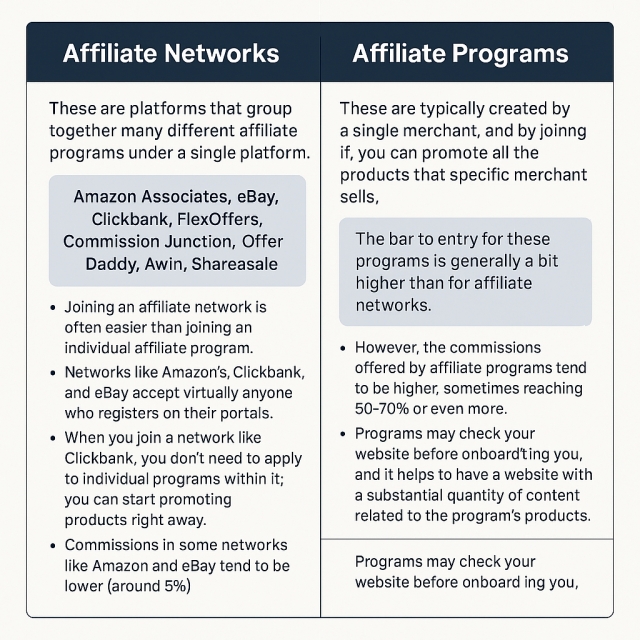
The affiliate marketing landscape offers numerous program types, each with distinct characteristics and earning potential.
The ClickBank Marketplace
ClickBank operates as a network of programs rather than a single affiliate network like Amazon or eBay. Think of ClickBank as a marketplace where thousands of individual programs compete for your attention.
When you join ClickBank, you gain access to their entire marketplace through a single registration. No need to apply to individual programs—you can start promoting any product immediately.
ClickBank's search function helps you identify profitable programs using various metrics. The most important metric is "gravity"—a measure of how many affiliates are successfully selling a particular product. Higher gravity indicates proven market demand and conversion potential.
This instant access makes ClickBank particularly attractive to beginners who want to test multiple products without waiting for individual program approvals.
High-Paying Vertical Categories
Some markets are gold mines waiting to be excavated, while others will leave you digging for pennies in your spare time.
The highest-paying verticals share three characteristics: urgent problems, affluent audiences, and high lifetime customer values. Health and wellness tops the list because people will pay almost anything to feel better, look younger, or live longer. When someone's dealing with chronic pain or desperate to lose weight before a wedding, price becomes secondary to results.
Finance and business opportunity niches follow closely behind because the promise of making money has an almost magnetic pull. Investment courses, trading systems, and business coaching programs command premium prices because the potential ROI justifies the investment. A $2,000 trading course seems reasonable if it promises to generate $10,000 monthly.
Technology and software occupy the sweet spot of recurring revenue. When businesses depend on tools for their daily operations, they'll pay monthly subscriptions without blinking. The lifetime value of a software customer can stretch into thousands of dollars.
Tier 1 High-Converting Verticals:
-
Casino/Gambling: $100-$500 CPA or 25-50% revenue share
Forex/Binary Options: $200-$1,000 CPA
Cryptocurrency: $50-$500 CPA (especially during bull markets)
Health/Nutraceuticals: $40-$150 CPA for trials
High-Ticket eCommerce: 5-20% revenue share ($50-$500 per sale)
Evergreen Profitable Verticals:
-
Weight Loss and Fitness
Make Money Online/Business Opportunities
Dating and Relationships
Male Enhancement
Debt Relief and Finance
Brain Pills and Cognitive Enhancement
Lead Generation Services
These verticals succeed because they address fundamental human desires: health, wealth, and relationships. People actively search for solutions in these areas and willingly spend money on products that promise results.
Payment Models Explained
The mathematics of affiliate marketing can make or break your business, so let's decode the payment structures that separate the pros from the perpetually broke.
Understanding these models isn't just accounting—it's strategic intelligence that determines whether you're building wealth or just staying busy.
Cost Per Action (CPA): You earn a fixed amount when visitors complete specific actions—making purchases, signing up for trials, or submitting contact information. CPA offers predictable earnings and works well for beginners.
Revenue Share: You receive a percentage of the actual sale amount. This model can generate higher earnings with expensive products but provides less predictable income.
Cost Per Lead (CPL): You earn money when visitors submit their contact information. CPL offers easier conversions since people don't need to make purchases immediately.
Cost Per Install (CPI): Popular in mobile app promotion, you earn when visitors download and install applications.
Recurring Commissions: The holy grail of affiliate marketing. You earn ongoing commissions for subscription-based services, creating passive income streams.
Recurring commissions are the holy grail of sustainable affiliate income. Instead of one-time payments, you earn ongoing commissions for as long as customers remain subscribed. A $50 monthly commission might not sound impressive until you realize it could generate $600 annually per customer.
The professionals diversify across multiple payment models, building portfolios of income streams rather than betting everything on single commission structures.
Signing Up for Affiliate Marketing Programs
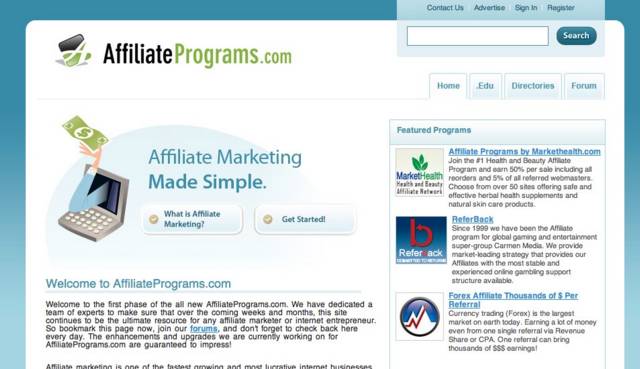
Reading terms of service before joining any affiliate program or network isn't optional—it's essential for long-term success.
Violating terms can result in account termination and forfeit commissions.
Universal Compliance Requirements
Beware of the FTC, ASA, and GDPR. Ignore them at your own financial peril, because regulatory compliance isn't optional—it's the difference between building a sustainable business and getting nuked from orbit by government agencies.
The Federal Trade Commission doesn't care if you're making $50 or $50,000 monthly. Their disclosure requirements apply to everyone equally. That innocent product recommendation on your Instagram story? It needs a #ad hashtag. Your "honest review" blog post? Better include clear affiliate disclaimers above the fold.
Image Usage: Source your own product photos rather than copying images directly from merchant websites. This prevents copyright issues and creates more authentic content.
Disclosure Requirements: Every page containing affiliate links must include clear disclosure statements. Place these disclosures prominently, preferably at the top of your content. The FTC requires transparency about financial relationships with merchants.
Brand Name Restrictions: Avoid using merchant brand names in ways that suggest official partnerships when none exist. You can mention "Amazon products" or "eBay listings" but cannot imply direct business relationships.
Exclusive Promotion Clauses: Some programs prohibit promoting competing products within the same content piece. Check individual program terms before mixing multiple affiliate links.
Traffic Quality Standards: Programs expect legitimate, organic traffic. Purchasing low-quality traffic or using deceptive practices violates most program terms.
Website vs. No-Website Approaches

Search engine optimization transforms websites into 24/7 sales machines. Instead of constantly creating new content to feed the social media beast, you can write evergreen articles that generate traffic and commissions for years. That comprehensive product review you published in January could still be making money next Christmas.
Websites provide credibility that social media profiles simply cannot match. When someone lands on a professional-looking site with detailed reviews, comparison charts, and helpful resources, they're already primed to trust your recommendations. Trust translates directly into higher conversion rates and bigger commission checks.
The data advantages are game-changing. Website analytics reveal exactly which content drives sales, which traffic sources convert best, and which products generate the highest lifetime values. This intelligence allows you to double down on what works and eliminate what doesn't.
Most importantly, websites compound. Each piece of content you publish has the potential to attract visitors indefinitely, creating an asset that grows more valuable over time rather than disappearing into yesterday's social media feed.Search engine optimization transforms websites into 24/7 sales machines. Instead of constantly creating new content to feed the social media beast, you can write evergreen articles that generate traffic and commissions for years. That comprehensive product review you published in January could still be making money next Christmas.
Websites provide credibility that social media profiles simply cannot match. When someone lands on a professional-looking site with detailed reviews, comparison charts, and helpful resources, they're already primed to trust your recommendations.
Trust translates directly into higher conversion rates and bigger commission checks.
The data advantages are game-changing. Website analytics reveal exactly which content drives sales, which traffic sources convert best, and which products generate the highest lifetime values. This intelligence allows you to double down on what works and eliminate what doesn't.
Most importantly, websites compound. Each piece of content you publish has the potential to attract visitors indefinitely, creating an asset that grows more valuable over time rather than disappearing into yesterday's social media feed.
Operating affiliate marketing through dedicated websites provides numerous advantages that alternative approaches cannot match.
Complete Control: Your website gives you full control over design, content, and user experience. You can optimize conversion paths, implement advanced tracking, and build brand recognition.
SEO Benefits: Search engines favor comprehensive websites with quality content. Ranking for profitable keywords drives consistent, free traffic to your affiliate offers.
Professional Credibility: Visitors trust professional websites more than social media profiles or free platform pages. Trust directly correlates with conversion rates.
Multiple Monetization Options: Websites support various income streams—affiliate links, display advertising, sponsored content, and product sales.
Long-Term Asset Building: Quality websites appreciate in value over time. You're building a digital asset that can be sold or passed down.
Website Structure Strategies
A well-structured affiliate website is like a perfectly organized store—visitors find what they need quickly, trust the information they discover, and feel confident making purchases. Random blog posts scattered across cyberspace won't cut it in today's competitive landscape.
As an alternative to the silo content website, the hub-and-spoke affiliate website model works brilliantly for affiliate sites.
Create comprehensive category pages that establish your expertise in specific niches, then support them with detailed individual product reviews, comparison articles, and buying guides. This structure signals authority to both search engines and visitors.
Internal linking becomes your secret weapon when done strategically. Guide visitors from problem-awareness content toward solution-focused pages where affiliate links feel natural and helpful. Someone reading about "signs you need a new mattress" should seamlessly flow toward your detailed mattress comparison guide.
Single Authority Site: Create one comprehensive website covering related products under a unifying theme. For example, a fitness website promoting workout equipment, supplements, and training programs.
Multiple Niche Sites: Develop separate websites for unrelated product categories. A weight loss site and a cryptocurrency site target completely different audiences and require focused approaches.
Mini-Site Networks: Build collections of smaller, laser-focused websites targeting specific keywords or products. This approach spreads risk and allows rapid testing of new opportunities.
No Website Alternatives
Not everyone wants to become a web publisher, and frankly, not everyone should.
While possible, promoting affiliate products without websites introduces significant complications and limitations.
YouTube creates intimate connections that text-based reviews cannot match. Watching someone actually use a product, demonstrate its features, and share honest opinions builds trust faster than any written review. Video content also stays relevant longer and continues generating commissions years after publication.
Social media platforms offer built-in audiences and sophisticated targeting options. Instagram Stories, TikTok videos, and Facebook posts can go viral overnight, exposing your affiliate links to thousands of potential buyers without any SEO waiting periods.
Email marketing remains the highest-converting affiliate channel for many niches. Building an email list through lead magnets, free courses, or valuable newsletters creates direct communication with interested prospects. One well-crafted email to your list can generate more sales than months of social media posting.
YouTube Marketing: Create product review videos and include affiliate links in descriptions. This approach requires consistent content creation and adherence to YouTube's monetization policies.
Social Media Promotion: Use Facebook, Instagram, or TikTok to share affiliate links. Platform algorithm changes can destroy your reach overnight, making this approach risky for serious income.
Email Marketing Focus: Build email lists using free landing page builders, then promote affiliate products through email sequences. This requires purchasing domains for professional appearance and investing in autoresponder services.
Free Platform Limitations: Using Blogger, Tumblr, or WordPress.com appears unprofessional and limits customization options. These platforms can delete your content without warning, destroying months of work.
If you choose no-website approaches due to budget constraints, treat them as temporary solutions while saving money for proper website hosting and domain registration.
Essential Questions Before You Start
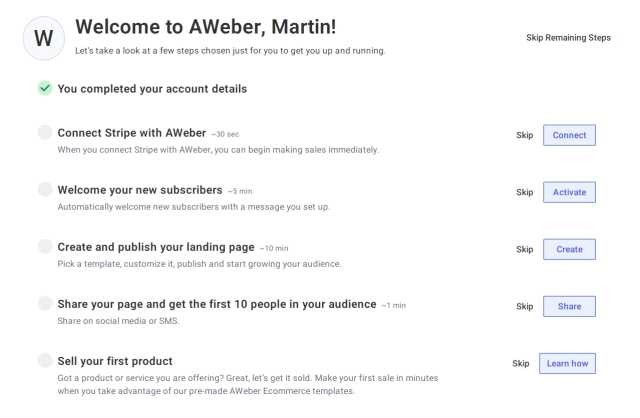
Before diving into affiliate marketing, honestly assess your current situation and capabilities. These three questions determine your optimal starting strategy:
Question 1: Traffic Volume Assessment
Do you consistently attract 300+ unique daily visitors from different IP addresses?
If yes: You possess the foundation for immediate affiliate success. Focus on optimizing existing traffic rather than building from zero.
If No: Expect 6-12 months of consistent content creation before seeing significant results. Plan accordingly and don't expect instant income.
Question 2: Niche Market Analysis
Does your website focus on industries where visitors actively seek purchasing advice or services?
High-Intent Niches: Finance, health, technology reviews, business tools, and lifestyle products attract buyers ready to make decisions.
Low-Intent Niches: Entertainment, news, and general information sites require more sophisticated conversion strategies.
Question 3: Content Volume Evaluation
Do you have 50+ individual articles capable of naturally incorporating 2-3 affiliate links each?
Sufficient Content: You can immediately implement affiliate strategies across your existing content library.
Insufficient Content: Focus on content creation before aggressive monetization. Quality content drives both traffic and conversions.
Strategic Recommendations Based on Your Answers
All Three "Yes" Answers: Join Amazon Associates, eBay Partners, and ClickBank immediately. You're ready for advanced strategies.
Any "No" Answers: Start with eBay Partners or ClickBank while building your foundation. Avoid Amazon Associates until you meet their requirements.
Why Beginners Should Avoid Amazon Associates
Amazon Associates requires three sales within 180 days, or they terminate your account. This policy creates unnecessary pressure for beginners still learning conversion optimization.
Spending six months adding Amazon links throughout your website, only to lose your account due to insufficient sales, wastes enormous effort. Those dead links require months to replace with alternative programs.
eBay Partners and ClickBank offer more forgiving policies, allowing you to learn affiliate marketing fundamentals without arbitrary deadlines.
Once you've mastered traffic generation and conversion optimization with other programs, Amazon Associates becomes a viable option for experienced affiliates.
High-Paying Verticals and Traffic Sources
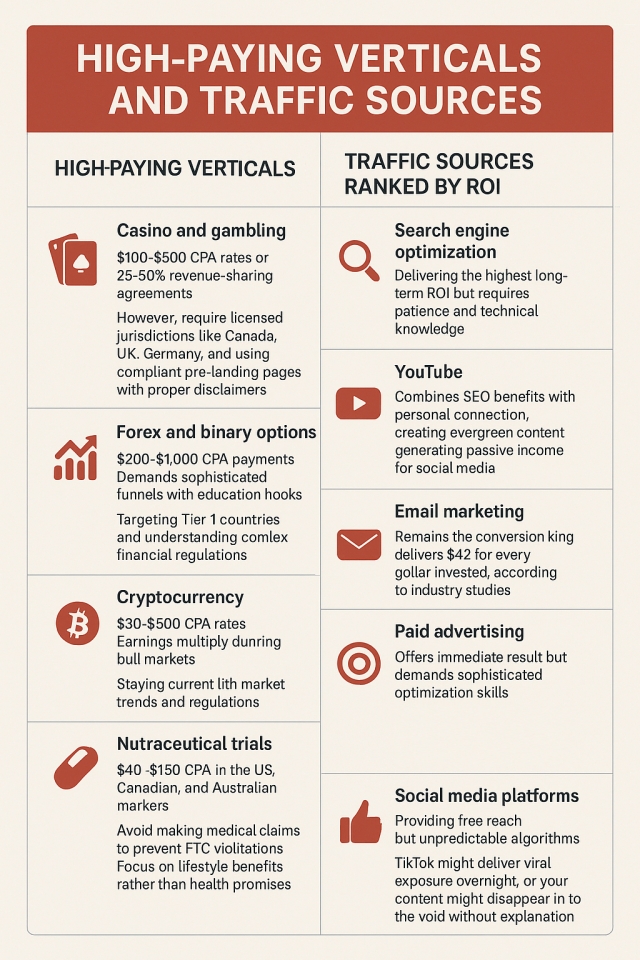
Some niches pay rent money; others buy houses. The difference isn't effort—it's market selection. Health supplements, financial trading courses, and business coaching dominate the high-revenue charts because desperate people pay premium prices for transformation.
Weight loss and anti-aging products tap into vanity and insecurity, two emotions that make wallets open quickly. Trading systems and investment courses promise financial freedom to debt-stressed audiences. Business coaching sells the dream of entrepreneurial escape from corporate drudgery.
These verticals share common traits: urgent problems, affluent audiences, and high customer lifetime values. A diabetic supplement customer might spend $200 monthly for years. A forex trading student could purchase multiple courses totaling thousands.
The key is matching your credibility with market demand. Selling fitness products without personal transformation stories feels hollow. Promoting investment courses while living paycheck-to-paycheck lacks authenticity that sophisticated audiences immediately detect.
Casino and gambling leads the pack with $100-$500 CPA rates or 25-50% revenue-sharing agreements. However, this vertical requires operating in licensed jurisdictions (Canada, UK, Germany) and using compliant pre-landing pages with proper disclaimers.
Forex and binary options offer $200-$1,000 CPA payments but demand sophisticated funnels with educational hooks. Success requires targeting Tier 1 countries and understanding complex financial regulations.
Cryptocurrency provides $50-$500 CPA rates, with earnings multiplying during bull markets. "How to Earn 5% Daily" angles perform well, but success requires staying current with market trends and regulations.
Nutraceutical trials generate $40-$150 CPA in the US, Canadian, and Australian markets. Avoid making medical claims to prevent FTC violations, and focus on lifestyle benefits rather than health promises.
High-ticket eCommerce offers 5-20% revenue shares, typically $50-$500 per sale. Eco-friendly products, luxury items, and "As Seen on TV" merchandise convert consistently well.
Traffic Sources Ranked by ROI
Not all traffic is created equal, and confusing clicks with cash is how beginners stay broke. Search engine optimization delivers the highest long-term ROI but requires patience and technical knowledge that many affiliates lack.
YouTube combines SEO benefits with personal connection, creating evergreen content that generates passive income for years. One viral product review can outperform months of social media posting.
Email marketing remains the conversion king, delivering $42 for every dollar invested according to industry studies. Direct communication with opted-in subscribers eliminates platform algorithm gambling.
Paid advertising offers immediate results but demands sophisticated optimization skills. Facebook and Google ads can scale successful campaigns rapidly, but they'll also burn through budgets quickly when targeting and messaging miss the mark.
Social media platforms provide free reach but unpredictable algorithms. TikTok might deliver viral exposure overnight, or your content might disappear into the void without explanation.
Native advertising (MGID, Taboola, RevContent) provides the highest return on investment for nutraceuticals, finance, and business opportunities. With $0.30-$2.00 CPCs and higher intent than push notifications, native ads excel when using news-style headlines like "FDA Approves New Weight Loss Method."
Facebook and Instagram advertising works best for dating, eCommerce, and local offers. CPMs ranging from $20 in Tier 1 countries require careful audience targeting. "Ugly" lead generation forms with headlines like "Get Your Free Bitcoin Guide" often outperform polished designs.
Google Ads (Search and YouTube) dominate forex, SaaS, and high-ticket coaching verticals. Despite $1-$10 CPCs, conversion rates of 5-20% justify the investment. Bidding on "[product] scam" keywords targets highly motivated buyers.
Push Notifications (PropellerAds, ZeroPark) offer incredibly cheap $0.01-$0.05 CPCs for mobile submissions, CPL offers, and nutraceuticals. While traffic quality remains lower, the volume and cost efficiency work well for specific offer types.
Adult Traffic (ExoClick, TrafficJunky) serves dating, cam sites, and male enhancement offers effectively. $0.50-$3.00 CPMs provide hyper-targeted niche audiences willing to spend money.
Modern Traffic Arbitrage Strategies
Traffic arbitrage is the art of buying attention cheap and selling it expensive—digital alchemy that transforms advertising spend into affiliate commissions. The margins can be spectacular when executed correctly, but the learning curve is steep and expensive.
Native advertising platforms like Taboola and Outbrain offer premium placements on major news sites, lending credibility to affiliate promotions. The traffic quality is higher than typical display advertising, though costs reflect this premium positioning.
Social media arbitrage exploits platform-specific behaviors and demographics. TikTok users respond differently than LinkedIn professionals, requiring customized creative approaches and landing page experiences.
Push notification networks deliver immediate engagement but require aggressive conversion optimization. Users who accept push notifications are typically action-oriented, making them valuable for time-sensitive offers.
The key is testing small, measuring everything, and scaling winners ruthlessly. Successful arbitrageurs treat campaigns like scientific experiments, not marketing creative projects. Data trumps intuition every time.
Traffic arbitrage involves purchasing traffic at wholesale prices and redistributing it for profit. This strategy works particularly well with mobile pop traffic and redirect traffic sources.
Programmatic media buying automates the traffic purchasing process, allowing affiliates to bid on inventory across multiple exchanges simultaneously. This approach requires larger budgets but scales efficiently.
Contextual advertising matches ads to webpage content, improving relevance and conversion rates. This strategy works well for content-heavy websites and blog-based affiliate promotions.
Geographic Targeting Strategies
Location determines lifetime value in ways that constantly surprise affiliates. A dating app conversion from Norway pays 10x more than one from the Philippines, even though the user behavior appears identical.
Tier 1 countries—United States, Canada, Australia, and the UK—command premium pricing across virtually every vertical. Their strong currencies, established credit systems, and consumer spending habits make them gold goldmines for affiliates who can capture their attention.
Emerging markets offer volume opportunities with lower per-conversion values. India and Brazil provide massive audiences with growing purchasing power, perfect for affiliates building scale-based businesses.
Time zone considerations affect campaign performance dramatically. Launching promotions when your target audience is sleeping guarantees poor results regardless of your targeting precision.
Cultural sensitivity isn't just politically correct—it's financially essential. Product positioning that works in individualistic Western cultures often fails in community-oriented Asian markets. Understanding local values prevents expensive campaign mistakes.
Tier 1 countries (US, UK, Canada) offer the highest payouts but face intense competition. Focus here once you've mastered traffic generation and conversion optimization.
Tier 2 countries (Germany, France, Italy) provide solid payouts with less competition. These markets often represent the sweet spot for experienced beginners.
Tier 3 countries (Vietnam, Thailand, and the Philippines) offer lower payouts but extremely affordable traffic costs. Perfect for testing new offers and campaigns.
Tier 4 countries (Brazil, India, and APAC regions) require high-volume, low-margin approaches but can generate substantial profits with proper execution.
Avoiding Get-Rich-Quick Schemes
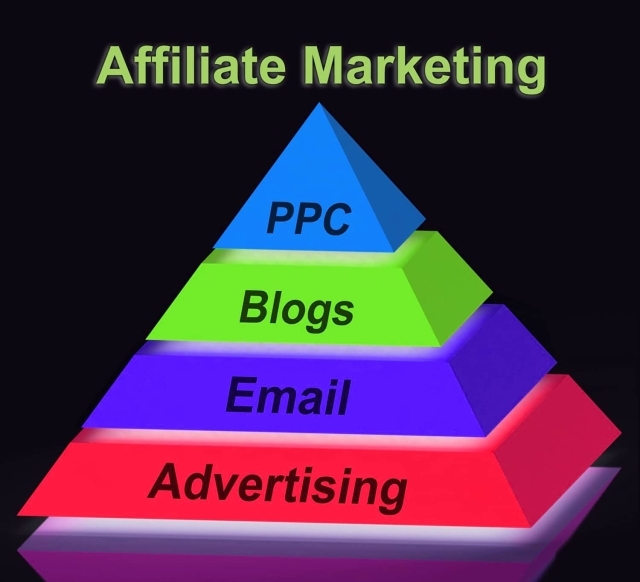
Twenty-five years after affiliate marketing's emergence, fake gurus still prey on desperate beginners with impossible overnight wealth promises. These schemes cost aspiring affiliates thousands of dollars while delivering worthless information.
Realistic Expectations
Successful affiliate marketing requires money, effort, and consistent work over months or years. Unless you already own a website generating 300-1000+ daily visitors in popular niches, expect significant upfront investments in research, content creation, and traffic generation.
Time Investment: Plan for 6-12 months of consistent daily work before seeing meaningful income. Part-time efforts extend this timeline considerably.
Financial Investment: Budget $500-$2000 for tools, hosting, content creation, and initial traffic purchases. Attempting affiliate marketing without investment capital severely limits your options.
Learning Curve: Master multiple skills, including content creation, SEO, traffic generation, conversion optimization, and analytics interpretation. Each skill requires dedicated study and practice.
Building sustainable income requires months of consistent effort, not weekend warrior commitment levels.
Most successful affiliates earn their first $1,000 within 3-6 months of focused effort. Reaching $10,000 monthly typically takes 12-18 months. The timelines compress with larger advertising budgets but extend with purely organic strategies.
Expect 90% of your initial campaigns to fail or underperform. Success emerges from systematically testing, measuring, and optimizing the 10% that show promise. Failure isn't a setback—it's market research.
The learning curve is real and expensive. Budget for education through both courses and campaign losses. Every mistake teaches valuable lessons that improve future performance, but only if you're honest about analyzing failures instead of making excuses.
Red Flags to Avoid
Pyramid scheme affiliate programs disguised as legitimate opportunities promise unrealistic commission structures that depend more on recruiting other affiliates than selling actual products to end consumers.
Tracking systems that frequently malfunction or show suspicious discrepancies between clicks and conversions indicate either technical incompetence or deliberate fraud designed to steal your commissions.
Products with no legitimate use case beyond affiliate promotion—weight loss scams, get-rich-quick schemes, miracle cures—eventually face regulatory crackdowns that destroy affiliate accounts without warning.
Overnight Success Claims: Any course or guru promising quick riches without substantial work is lying. Sustainable affiliate income requires building genuine value for audiences.
Secret Methods: Legitimate affiliate marketing strategies are publicly available through reputable sources. "Secret" methods typically violate platform terms of service or legal regulations.
No Experience Required: While affiliate marketing accepts beginners, success demands developing real skills and knowledge. Courses claiming anyone can succeed immediately without learning anything are scams.
Pay-to-Play Communities: Legitimate affiliate marketing education doesn't require ongoing monthly payments for basic information access.
Building Sustainable Success
The difference between one-hit wonders and long-term success lies in creating processes, not just promotions.
Diversification across multiple programs, traffic sources, and promotional methods protects against algorithm changes and program terminations. Smart affiliates never depend on single points of failure that could destroy months of work overnight.
Long-term thinking trumps short-term gains every time. Building email lists, creating evergreen content, and establishing genuine expertise pay dividends for years, while chasing quick commission opportunities leads to constant hustle without sustainable growth.
Market Research First: Before choosing niches, thoroughly research demand levels, competition intensity, and traffic costs. Use tools like SpyFu, SEMrush, and Ahrefs to gather data.
Content Quality Focus: Create genuinely helpful content that solves real problems for your target audience. Google and social media platforms favor valuable content over promotional material.
Diversification Strategy: Don't rely on single traffic sources, affiliate programs, or product categories. Diversification protects against algorithm changes, program terminations, and market shifts.
Compliance Priority: Follow all platform terms of service and legal requirements. Short-term rule violations can destroy long-term business prospects.
Essential Tools for Success
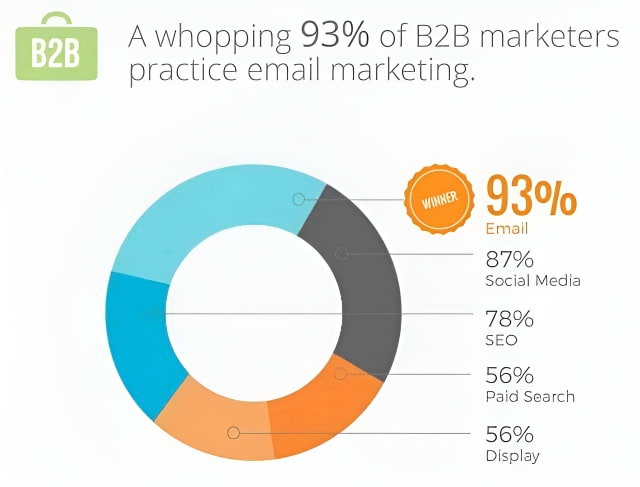
Professional affiliate marketing requires sophisticated tools for research, automation, and optimization. While free alternatives exist, premium tools typically provide better data and save significant time.
Autoresponder Services
Email marketing drives consistent affiliate revenue through relationship building and automated sales sequences. Quality autoresponders handle list management, campaign automation, and compliance requirements.
Purpose One: List Building
Autoresponders capture visitor email addresses through lead magnets—valuable free resources like reports, ebooks, tools, or courses that solve specific problems for your target audience.
Create compelling lead magnets addressing real pain points in your niche. For example, an "Ultimate Guide to Cryptocurrency Security" works well for crypto-focused websites, while "30-Day Weight Loss Meal Plans" attracts fitness audiences.
Position lead magnets behind subscription forms, requiring email addresses for download access. This exchange provides mutual value—visitors receive useful information while you gain permission to market relevant offers.
Purpose Two: Sales Automation
Email sequences nurture relationships while gradually introducing affiliate offers. Effective campaigns contain 6-15 emails following proven formulas:
Awareness → Engagement → Consideration → Evaluation → Conversion
Each email must provide standalone value rather than just promotional content. Share tips, insights, case studies, and stories that build trust and demonstrate expertise before introducing affiliate offers.
Recommended Autoresponder Services:
-
AWeber: Excellent deliverability rates and user-friendly interface. Strong customer support and an extensive template library make AWeber ideal for beginners.
GetResponse: Advanced automation features including visual workflow builders. Integrated landing page creation and webinar hosting provide comprehensive marketing solutions.
Mailchimp: Free plans support up to 2,000 subscribers, perfect for testing email marketing effectiveness. Premium features unlock advanced segmentation and automation capabilities.
SendinBlue: Generous free plans with SMS marketing integration. European data compliance makes SendinBlue suitable for international affiliates.
MailerLite: Simple interface with powerful automation features. Competitive pricing and reliable delivery rates appeal to cost-conscious affiliates.
Market Research Tools
Successful affiliate marketing begins with understanding what people actually want to buy, not what you think they should want. Professional research tools reveal the difference between personal assumptions and market reality.
SEMrush and Ahrefs expose competitor strategies, keyword opportunities, and content gaps that represent untapped affiliate potential. Understanding what's already working eliminates guesswork from campaign planning.
Google Trends identifies seasonal patterns and emerging opportunities before markets become saturated with competing affiliates. Early entry into growing niches provides significant advantages.
Social listening tools reveal pain points and desires that traditional keyword research misses. Understanding the emotional language your audience uses improves conversion rates dramatically across all promotional channels.
Free Research Tools:
SpyFu reveals competitors' profitable keywords, ad copy, and traffic sources. Use SpyFu to identify gaps in competitor strategies and discover untapped keyword opportunities.
Ubersuggest provides keyword search volumes, competition levels, and content ideas. Neil Patel's tool offers substantial free functionality for basic research needs.
Soovle aggregates autocomplete suggestions from Google, YouTube, Amazon, and other platforms. This tool quickly identifies popular search phrases across multiple channels.
Wordtracker specializes in long-tail keyword discovery with lower competition levels. Long-tail keywords often convert better than broad terms due to higher search intent.
Premium Research Platforms:
SEMrush provides comprehensive competitive analysis, keyword tracking, and content optimization suggestions. The investment pays off through improved targeting accuracy and content performance.
Ahrefs excels at backlink analysis and content gap identification. Understanding competitor link-building strategies helps develop superior content marketing approaches.
BuzzSumo identifies viral content opportunities and influential content creators in your niche. Social media success often translates to affiliate marketing opportunities.
Traffic Analysis and Optimization
Traffic analysis tools transform visitor behavior into actionable insights that increase conversion rates and maximize commission potential from existing traffic.
Google Analytics reveals which content drives actual sales versus vanity metrics like page views. Understanding the difference between traffic and profitable traffic guides content strategy decisions.
Heatmap tools like Hotjar show exactly where visitors click, scroll, and abandon pages. Visual data reveals optimization opportunities that spreadsheet analytics miss completely.
A/B testing platforms enable systematic improvement of landing pages, email subject lines, and call-to-action buttons. Small percentage improvements compound into substantial revenue increases over time.
Google Analytics tracks visitor behavior, traffic sources, and conversion paths. Understanding which traffic sources generate the most affiliate income allows optimization of marketing budgets.
Bing Webmaster is similar to Google Analytics but not as complex.
Hotjar provides heatmaps and user session recordings, revealing how visitors interact with your content and affiliate links. This data guides website optimization decisions.
Facebook Pixel tracks visitors across Facebook and Instagram, enabling retargeting campaigns and lookalike audience creation.
Affiliate Marketing Content Creation Tools
Content quality determines affiliate success more than any other factor. Professional creation tools help produce engaging material that builds audience trust and drives conversions consistently.
Grammarly improves writing quality and catches errors that could undermine credibility with potential customers.
Canva creates professional graphics, social media posts, and infographics without design experience.
Loom records screen capture videos for product demonstrations and tutorials that support affiliate promotions.
Link Management and Tracking
Affiliate links are your digital cash register—protecting and optimizing them directly impacts your income potential. Professional link management prevents revenue leakage from broken redirects and tracking failures.
Split testing different landing pages, offers, and promotional approaches requires sophisticated tracking that identifies winning combinations and eliminates underperforming campaigns quickly.
Link shorteners with analytics reveal which promotional methods drive actual clicks versus impressive-looking vanity metrics that don't translate into commissions.
ThirstyAffiliates (WordPress plugin) manages affiliate links centrally, enabling easy updates and comprehensive click tracking.
Pretty Links creates branded short links that appear more professional than raw affiliate URLs.
ClickMagick provides advanced tracking across multiple traffic sources and affiliate programs.
Market Research Strategies

Effective market research separates profitable affiliate campaigns from expensive failures. Understanding demand levels, competition intensity, and keyword difficulty guides niche selection and content strategies.
Keywords aren't just search terms—they're buying signals that reveal customer intent and wallet-opening moments. Understanding search volume means nothing without grasping the commercial intent behind those searches.
Long-tail keywords with lower competition often convert better than broad terms. "Best running shoes for flat feet" beats "running shoes" for affiliate conversions every time.
Monthly Search Volume: Target keywords attracting 30,000+ monthly searches to ensure sufficient market size. However, don't ignore long-tail keywords generating 1,000-2,000 monthly searches—these often convert better due to higher purchase intent.
Competition Analysis: Evaluate both the number of competing websites and their quality levels. High-quality, established competitors require more effort to outrank than numerous low-quality sites.
Commercial Intent: Focus on keywords indicating purchase readiness: "best," "review," "compare," "buy," "discount," and "coupon" terms attract motivated buyers rather than casual browsers.
Seasonal Considerations: Some keywords surge during specific periods (fitness in January, tax software in spring). Plan content calendars around seasonal demand patterns.
Competitive Intelligence
Successful affiliates study their competition obsessively, not to copy strategies but to identify gaps and opportunities others miss completely.
Digital marketing and SEO apps (like SEMrush) reveal competitor keywords, ad spend, and content strategies. Understanding what's working for others eliminates expensive guesswork from your campaigns.
Smart affiliates analyze competitor weaknesses more than strengths, finding underserved angles that capture overlooked audience segments.
Content Gap Analysis: Identify topics your competitors haven't covered thoroughly. These gaps represent opportunities for comprehensive, authoritative content that can dominate search results.
Backlink Opportunities: Analyze competitor backlink profiles to discover potential link sources. Websites linking to competitors might also link to superior content.
Social Media Presence: Monitor competitors' social media strategies to identify successful content formats and engagement tactics.
Advertising Analysis: Use tools like Facebook Ad Library and Google Ads Transparency Center to see the advertising approaches of competitors.
Traffic Source Evaluation
Not all traffic converts equally. Understanding the difference between knowledge-seekers and ready-to-buy visitors determines campaign profitability.
Search traffic converts highest because users actively seek solutions. Social media traffic requires more nurturing but offers viral potential.
Paid traffic provides immediate results but demands careful optimization. Organic traffic takes time but generates sustainable long-term income streams.
Organic Search Potential: Evaluate realistic ranking possibilities for target keywords based on current website authority and content quality.
Paid Advertising Costs: Research traffic costs across different platforms to ensure profitable economics after affiliate commissions.
Social Media Viability: Assess whether your target audience actively uses specific social platforms and engages with commercial content.
Email Marketing Opportunity: Determine whether your niche supports lead magnet creation and nurture sequence development.
Market Validation Techniques
Market validation prevents wasting months promoting products nobody actually wants to buy.
Pre-selling through email lists or social media posts reveals genuine demand before investing in full campaigns.
Google Ads testing with small budgets validates market interest quickly and cheaply, providing conversion data that guides larger promotional investments.
Minimum Viable Content: Create small amounts of content targeting specific keywords to test audience response before major investments.
Social Media Testing: Share potential content ideas on relevant social platforms to gauge interest levels and engagement rates.
Survey Research: Connect with target audience members through forums, Facebook groups, or Reddit communities to understand their actual problems and preferred solutions.
Competitor Revenue Estimation: Use tools like SimilarWeb and SEMrush to estimate competitor traffic and potential revenue levels.
How to Execute Your Strategy

Strategic content builds authority, trust, and predictable commission income.
Problem-focused content attracts ready-to-buy traffic better than product-focused reviews. Address pain points first, then introduce solutions naturally.
Evergreen content generates traffic and commissions for years, while trending topics provide short-term traffic spikes but limited long-term value.
Successful affiliate marketing execution requires systematic approaches that build momentum over time rather than sporadic efforts that waste resources.
Content Calendar Planning: Develop 90-day content calendars covering all major keywords and topics in your niche. Consistent publishing schedules improve search engine rankings and audience engagement.
Content Format Diversification: Create various content types, including in-depth guides, product comparisons, tutorials, case studies, and personal experience stories. Different formats appeal to different learning styles and search intentions.
Affiliate Integration Best Practices: Naturally incorporate affiliate links within valuable content rather than creating obvious promotional pieces. Readers respond better to helpful information that happens to include relevant product recommendations.
Update and Refresh Cycles: Regularly update existing content with new information, better affiliate offers, and improved optimization. Updated content often outperforms completely new content in search rankings.
Email Affiliate Marketing Execution
Email marketing transforms one-time visitors into recurring customers through systematic relationship building and strategic offer sequencing.
Welcome sequences introduce new subscribers to your expertise while subtly presenting relevant affiliate offers. First impressions determine long-term subscriber value.
Segmentation based on interests and behavior enables targeted promotions that feel personalized rather than broadcast spam, dramatically improving conversion rates and reducing unsubscribes.
Campaign Sequence Development: Create comprehensive email sequences that build relationships before introducing affiliate offers. Successful sequences typically include:
-
Welcome and value delivery (emails 1-3)
Authority building and case studies (emails 4-6)
Problem agitation and solution introduction (emails 7-9)
Offer presentation and urgency creation (emails 10-12)
Follow-up and additional offers (emails 13-15)
Segmentation Strategies: Divide email lists based on interests, engagement levels, and purchase history. Targeted messages convert significantly better than generic broadcasts.
Personalization Techniques: Use subscriber names, reference previous interactions, and tailor content to individual preferences and behaviors.
A/B Testing Programs: Continuously test subject lines, send times, content formats, and call-to-action placement to optimize campaign performance.
Traffic Generation Tactics
Smart affiliates focus on qualified prospects actively seeking solutions, not vanity metrics that look impressive but generate no commissions.
SEO Implementation: Optimize all content for target keywords while maintaining readability and value. Focus on comprehensive coverage of topics rather than keyword stuffing.
Social Media Promotion: Share content across relevant social platforms with platform-specific optimizations. LinkedIn content differs significantly from Instagram or TikTok approaches.
Paid Advertising Campaigns: Start with small budgets to test audience response before scaling successful campaigns. Track all metrics to ensure a positive return on ad spend.
Partnership Development: Build relationships with other content creators, influencers, and websites in your niche for collaboration opportunities.
Conversion Optimization
Small improvements in conversion rates multiply income without requiring additional traffic investments.
Landing Page Testing: Create dedicated landing pages for major affiliate offers rather than directing traffic to generic content. Focused pages convert better than multi-purpose content.
Call-to-Action Optimization: Test different CTA text, placement, colors, and urgency levels to maximize click-through rates on affiliate links.
Trust Signal Enhancement: Include testimonials, certifications, guarantees, and social proof to increase visitor confidence in your recommendations.
Mobile Optimization: Ensure all content and affiliate links function perfectly on mobile devices, as mobile traffic often exceeds desktop usage in many niches.
Performance Tracking and Analysis
Data reveals what's working and what's wasting money. Professional affiliates measure everything, optimize winners, and eliminate losers before they drain budgets completely.
Revenue Attribution: Track which traffic sources, content pieces, and campaigns generate the most affiliate income. Focus resources on the highest-performing activities.
Conversion Path Analysis: Understand the typical customer journey from initial visit to affiliate purchase. Optimize each step to reduce abandonment and increase conversions.
Seasonal Pattern Recognition: Identify recurring patterns in traffic, engagement, and sales to predict and prepare for peak opportunity periods.
Competitive Monitoring: Regularly analyze competitor strategies, new entrants, and market changes that might affect your positioning and opportunities.
Affiliate Networks to Join
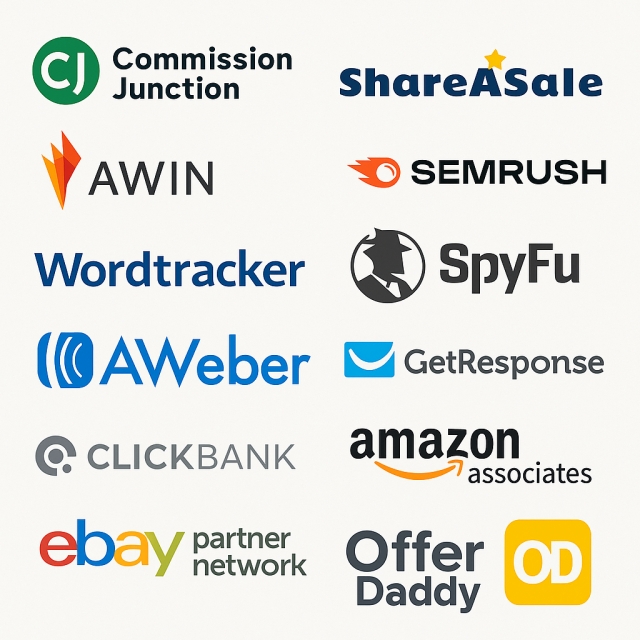
Selecting the right affiliate networks and individual programs significantly impacts your earning potential and operational efficiency. Here are vetted networks and programs currently accepting new affiliates:
Major Affiliate Networks
Commission Junction (CJ Affiliate) One of the oldest and most established networks featuring premium brands across all major verticals. Higher approval standards but superior merchant quality and reliable tracking systems.
ShareASale is a user-friendly network with excellent beginner support and educational resources. Strong fashion, home goods, and lifestyle merchant selections make ShareASale ideal for content-focused affiliates.
FlexOffers' comprehensive network offers diverse merchants and competitive commission rates. Advanced tracking technology and a responsive support team make FlexOffers suitable for affiliates at all levels.
Awin is a global network with a particularly strong European presence. Premium brands and comprehensive reporting tools, though approval processes can be more stringent than other networks.
Specialized High-Paying Programs
Generic affiliate programs pay generic commissions. Specialized networks in finance, software, and B2B services offer premium payouts that justify focused promotional efforts.
Software and Tools:
SEMrush Affiliate Program $200 CPA for trial signups, $0.01 per free account signup, and 40% recurring commissions for subscriptions. SEO and marketing tools appeal to business audiences with high conversion rates.
SpyFu Affiliates 25% recurring commissions on competitive intelligence tool subscriptions. High lifetime value customers and consistent demand from digital marketers.
Wordtracker Affiliate Program 30% recurring commissions for keyword research tool subscriptions. Evergreen demand from content creators and SEO professionals.
Email Marketing Services:
AWeber Advocates 30% recurring commissions for email marketing service subscriptions. High customer retention rates create substantial long-term income potential.
GetResponse Referral Program 33% recurring commissions plus $100 bonuses for qualified referrals. A comprehensive marketing platform appeals to serious business owners.
Mailchimp Referral Program: $240 rewards for businesses spending $1,200+ annually. The freemium model creates an easy entry point for prospects.
Specialized Networks:
ClickBank is a digital product marketplace offering 10-75% commissions. Instant approval for most products, though quality varies significantly between merchants.
Amazon Associates 1-10% commissions on the world's largest product selection. Six-month performance requirements make this challenging for beginners despite low approval barriers.
eBay Partner Network 1-4% commissions on auction and Buy It Now sales. More forgiving policies than Amazon Associates while still offering a massive product selection.
Industry-Specific Opportunities
Every industry has unique affiliate opportunities that generalist marketers overlook. Niche expertise opens doors to exclusive programs with higher commissions and less competition.
Photography and Creative:
B&H Photo Video affiliates earn 1-8% commissions on professional photography and videography equipment. High-ticket items and a passionate audience create substantial earning opportunities.
Business and Finance:
Offer Daddy Various commission structures across financial services and business tools. Higher-risk verticals often provide higher rewards.
Software Development:
Netpeak Software Affiliate Program 25-30% recurring commissions for SEO and analytics tools. A niche focus creates less competition while maintaining strong demand.
Application and Approval Strategies
Getting accepted into premium affiliate programs requires strategic positioning.
Professional Website Requirement: Ensure your website appears complete and professional before applying to any network. Under-construction sites face automatic rejection from most programs.
Content Volume Standards: Publish at least 20-30 high-quality articles related to your target niche before submitting applications. Substantial content demonstrates serious business intentions.
Traffic Documentation: While many networks accept low-traffic sites, documenting even modest traffic levels through Google Analytics screenshots can improve approval odds.
Niche Alignment: Apply to networks and programs closely aligned with your content focus. A fitness website should prioritize health and wellness programs over technology or finance offers.
Application Timing: Submit applications during business hours on weekdays when possible. Manual review processes often move faster during standard business times.
Managing Multiple Programs
Successful affiliates treat portfolio management like professional investment fund managers.
Centralized Tracking: Use link management tools to track performance across all programs from a single dashboard. This data guides resource allocation decisions.
Payment Schedule Coordination: Organize programs by payment schedules (weekly, bi-weekly, monthly) to create consistent cash flow rather than irregular lump sums.
Terms Compliance Monitoring: Regularly review program terms for changes that might affect your promotional strategies or compliance requirements.
Performance Optimization: Focus efforts on programs generating the highest earnings per click (EPC) rather than spreading attention equally across all programs.
Outro
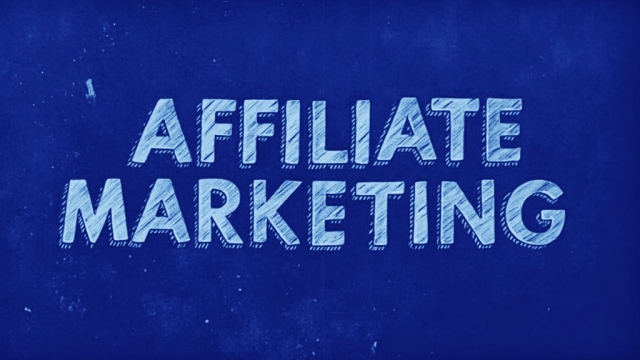
The affiliate marketing landscape continues evolving rapidly, with new opportunities emerging while others become saturated or obsolete. Success requires staying informed about industry changes, continuously testing new approaches, and maintaining focus on providing genuine value to your audience.
Remember that affiliate marketing success follows the same principles as any legitimate business: consistent effort, customer focus, ethical practices, and continuous learning. While the barriers to entry remain low, achieving substantial income requires treating affiliate marketing as a serious business venture worthy of professional dedication and strategic planning.
Start with one or two programs, master the fundamentals, and then gradually expand your efforts as experience and income grow. The affiliates earning six- and seven-figure incomes didn't achieve those results overnight—they built their success systematically over months and years of focused effort.
Your affiliate marketing journey begins with your next piece of content, your first email subscriber, or your initial program application. Take action today, but plan for long-term success rather than quick wins. The internet rewards patience, persistence, and value creation above all other qualities.
Media Attributions
pending...
© Martin Wensley 2022-2025 — What is Affiliate Marketing